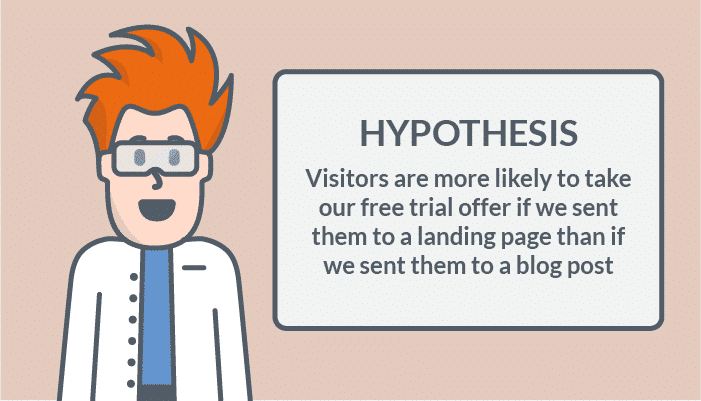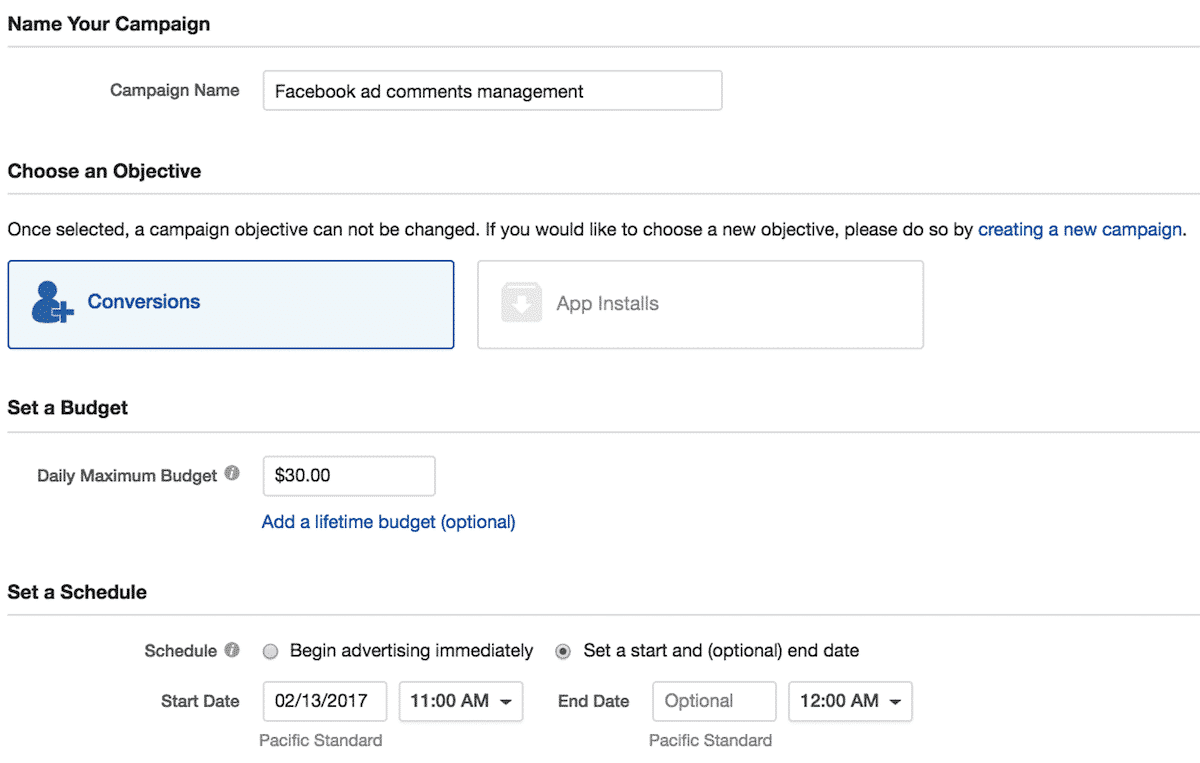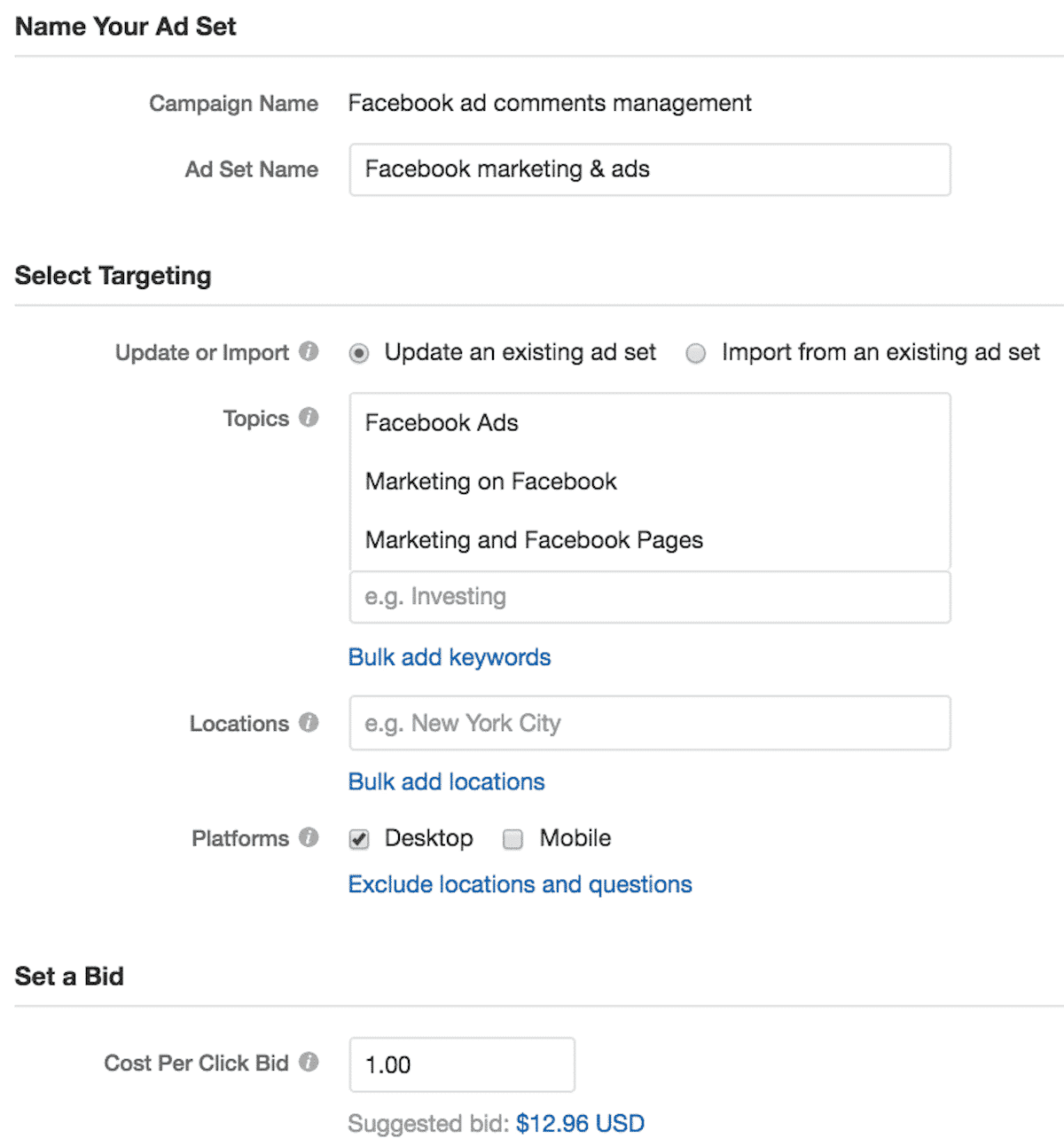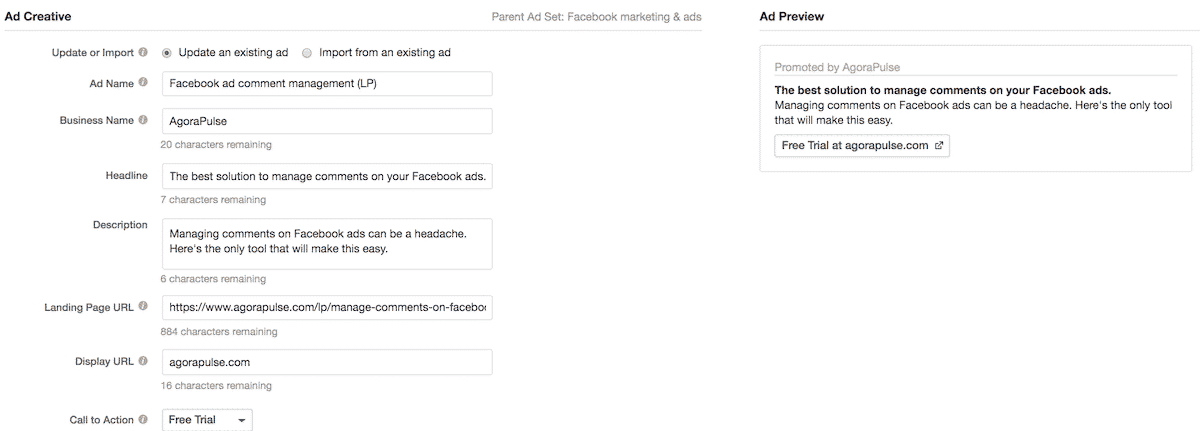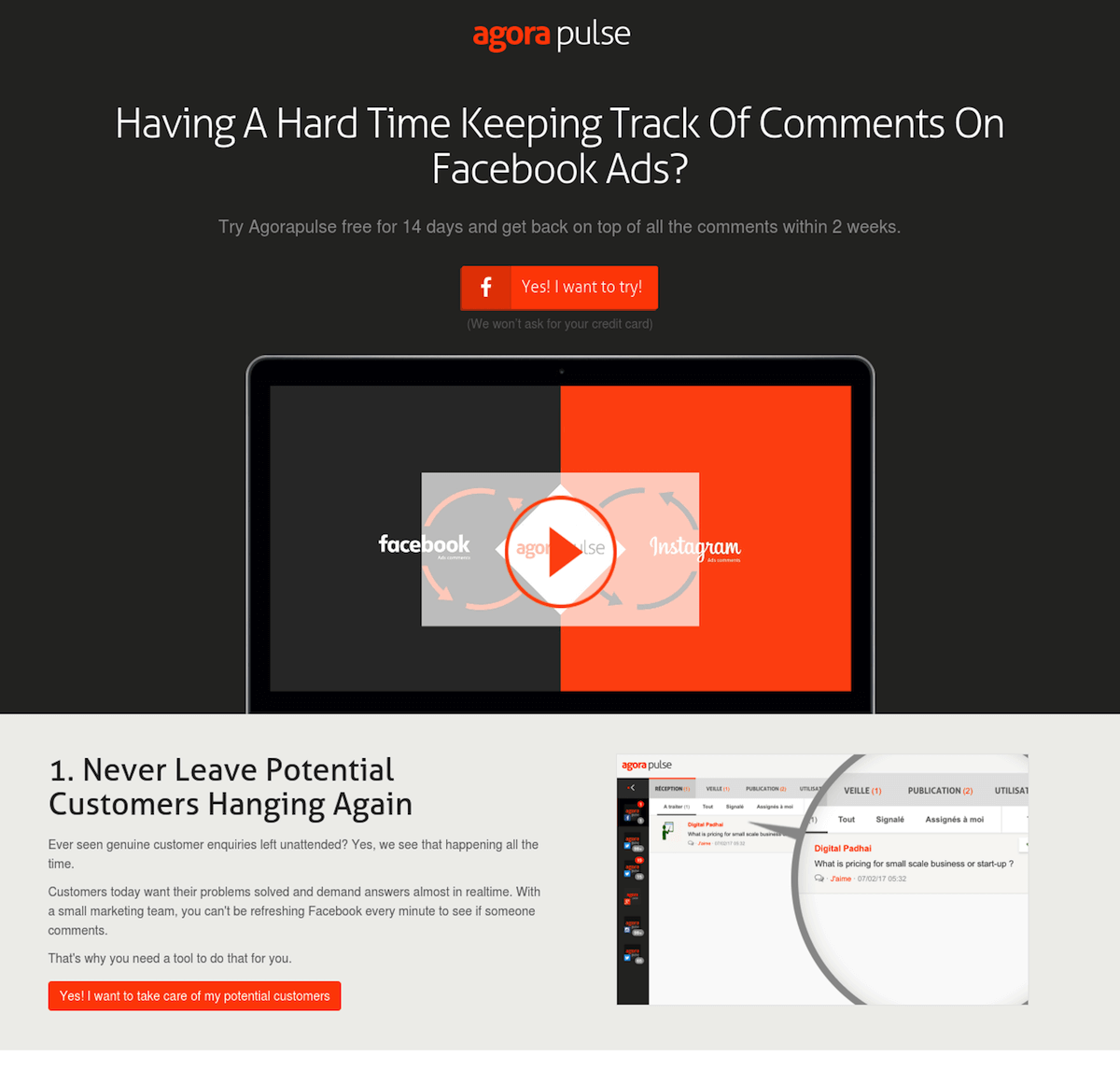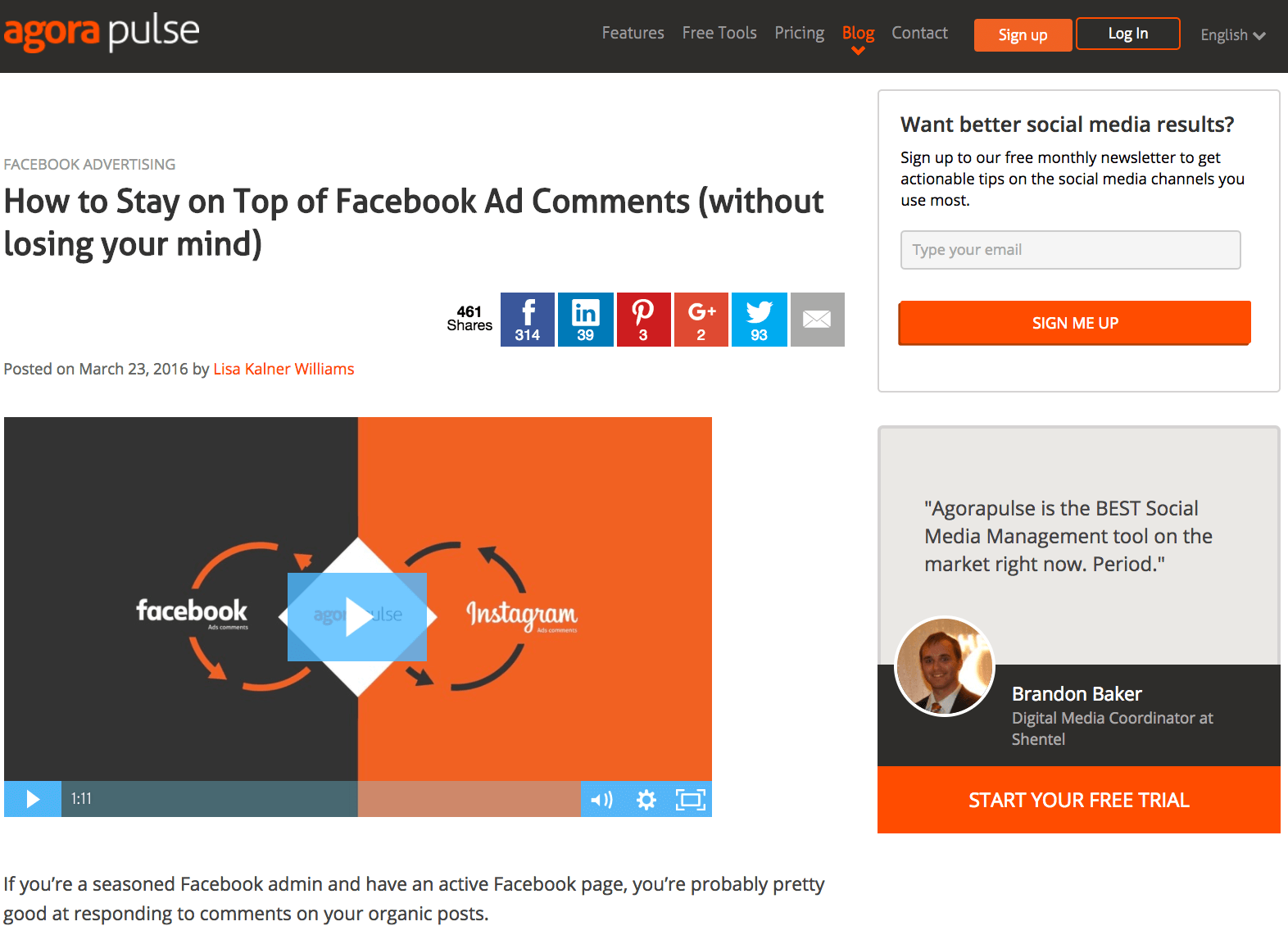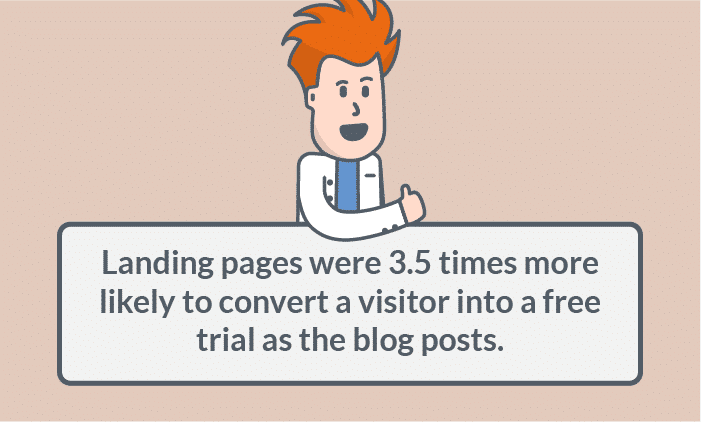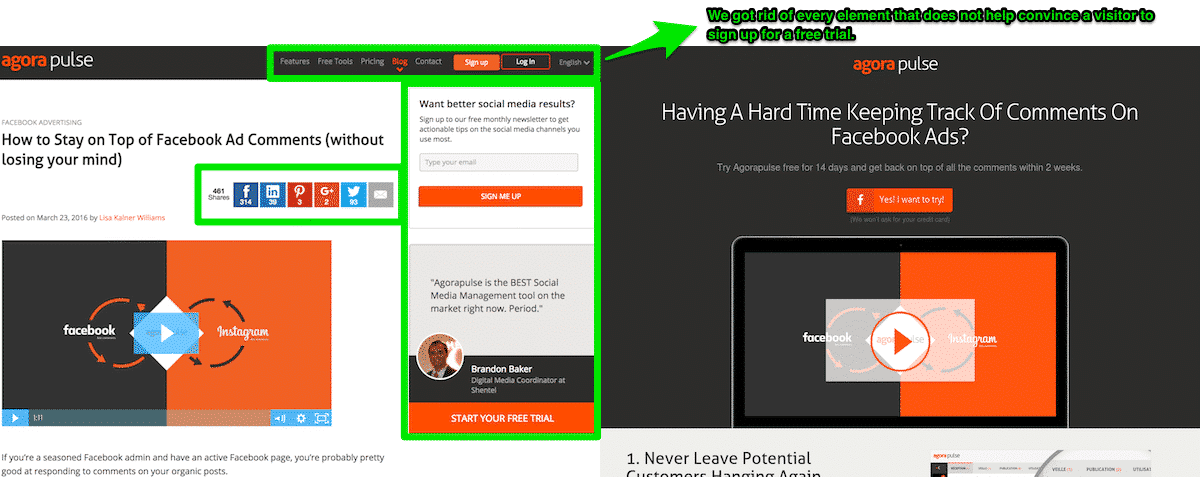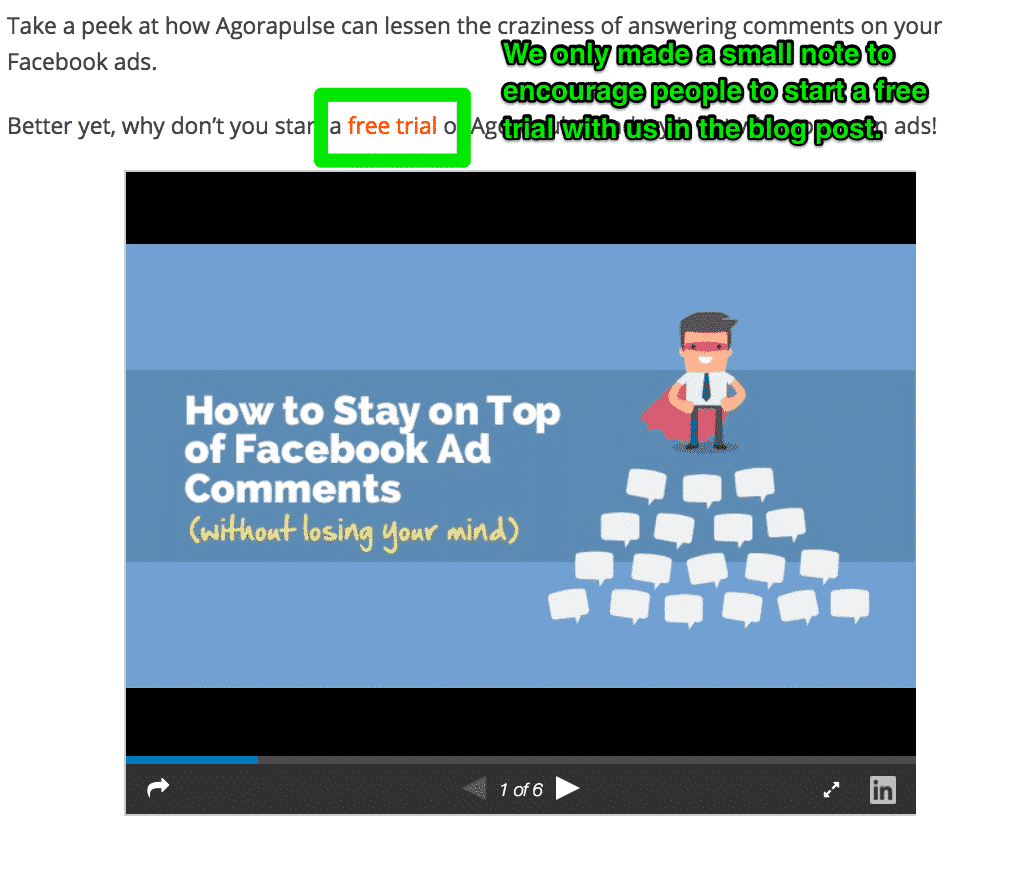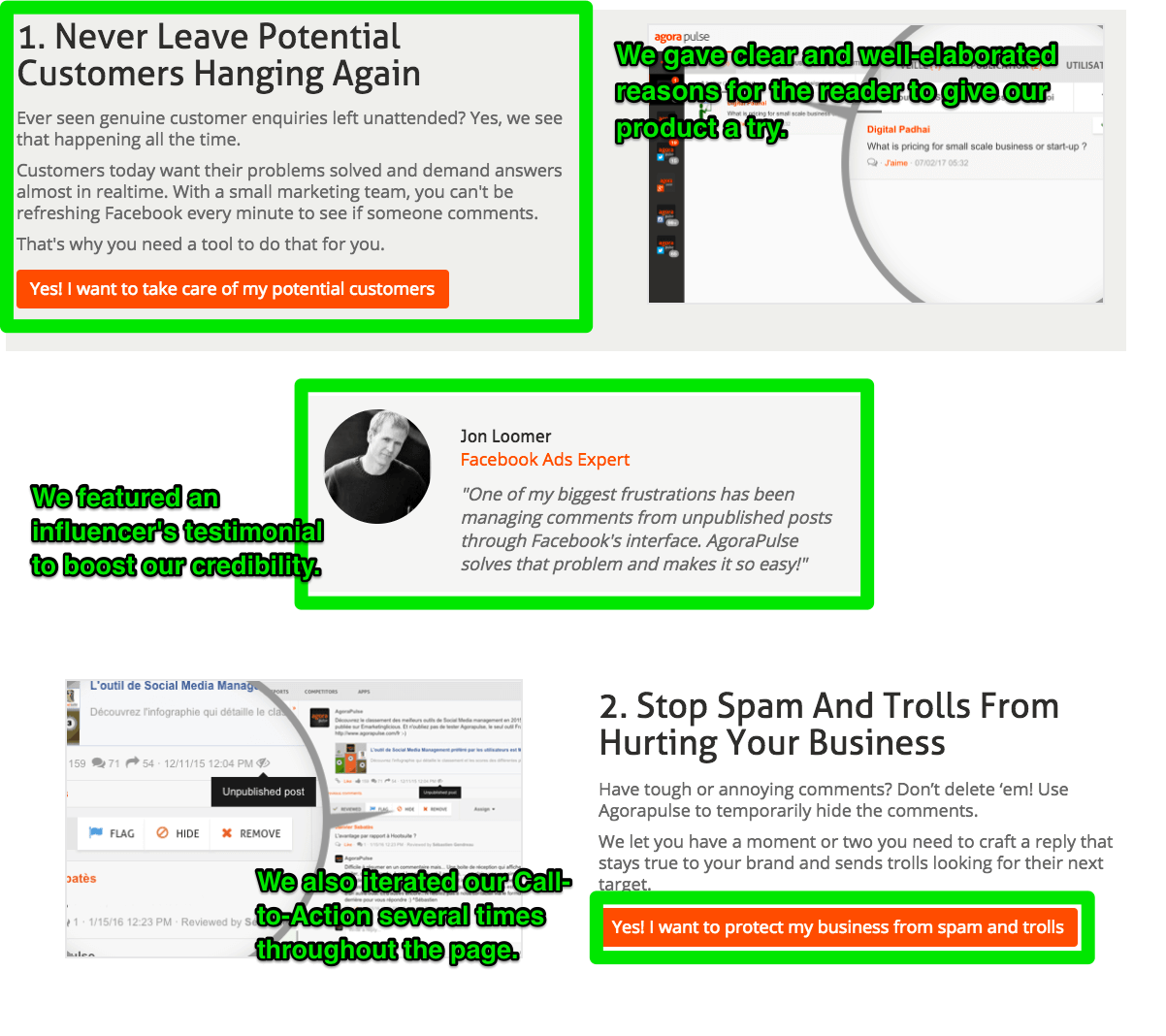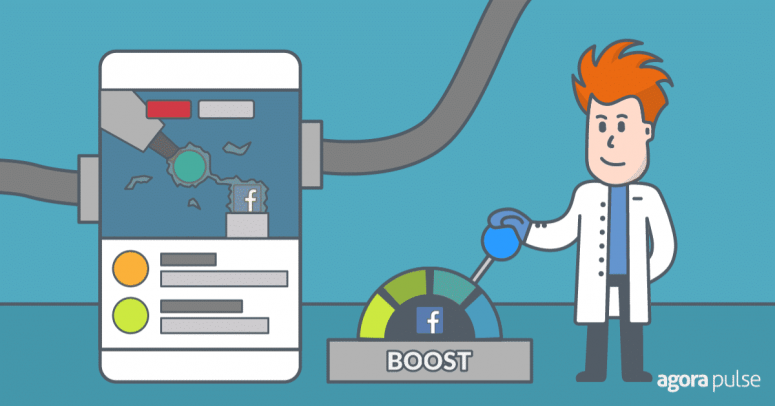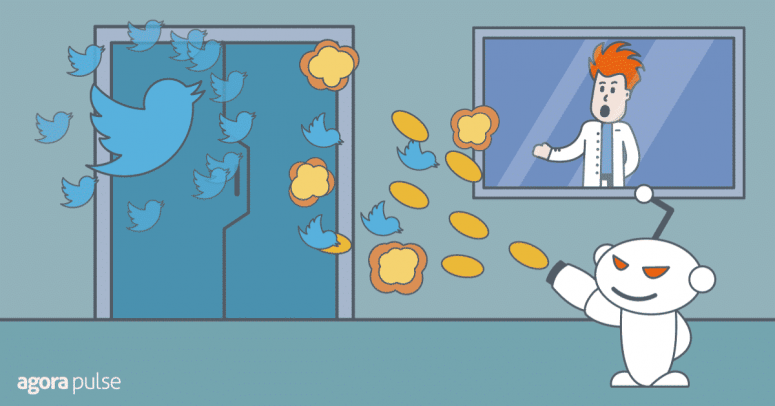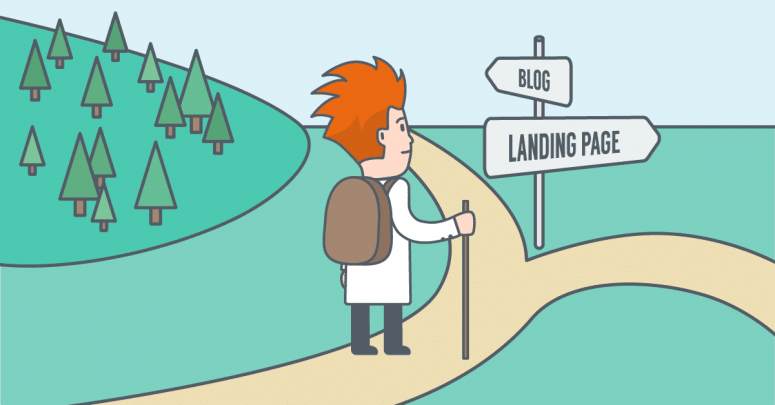
Subscribe to the Social Media Lab Podcast via iTunes | Stitcher | Spotify | Google Play | RSS
Where Should Quora Ads Traffic Go?
A few months ago, we published a post that introduced the Quora Advertising platform. As this post talks about an experiment we ran using Quora Ads, we recommend you give it a read.
As we mapped out our Quora ads strategy, we wondered — where should we send those who click on our ads? To a landing page that cuts to the chase about our offering — or to an educational blog post that presents an offer in a less in-your-face way?
These days, the first approach — landing page — seems to be the crowd favorite:
However, at Agorapulse, we have long been a fan of the second approach, which is to first send visitors to our blog posts.
Each blog post is highly informative and contains a subtle call-to-action at the end.
But we have been very interested to know if sending visitors to landing pages first would increase free trials, and in turn create a bigger pipeline of future customers.
Background on Quora Ads?
When we asked ourselves which of the two approaches works better, we had no strong hunch.
First, presenting an offer to your prospects right away seems opportunistic, especially when you are targeting people who have previously never heard of you.
While there is nothing technically wrong with this approach, it feels like you only care if your prospects become customers, not how they feel about their problem.
Yet, this method has become wildly popular in recent years, giving rise to concepts like “one-page funnels” and “4-step Facebook marketing systems”.
Truth is, this approach works for many people. A typical landing page may be able to convert 10% to 40% of visitors into leads, while a product landing page may be able to convert 1% to 3% of visitors into paying customers.
Contrast that with the second approach – sending prospects first to a blog post.
This approach seems more likable because it means giving value to your prospects first without expecting anything in return. It means building a relationship that goes beyond monetary transactions. It is also the way that successful personalities like Jon Loomer and Ian Cleary have built their businesses.
However, this approach takes a lot of time and effort. You need to constantly show up, produce content, and answer questions.
In our experience, a typical blog post converts just 1% to 10% of visitors into free trials. Numerically, this pales in comparison with the first approach.
So to increase the number of free trials we were getting, we wanted to see if it would be better to send traffic directly to a landing page instead.
Hypothesis: Visitors are more likely to take our free trial offer if we sent them to a landing page than if we sent them to a blog post.
Testing Quora Ads Traffic
Setting up this experiment on Quora was quite easy. All we had to do was to create one campaign, one ad set and two ads.
For the campaign, we:
- Chose the “Conversions” objective.
- Set a daily budget of $30.
Then we created the ad set:
If you take a look at the picture above, you may find three interesting tidbits:
- Because the feature we were promoting benefits mainly Facebook advertisers, we targeted Facebook ads and marketing-related topics.
- Our free trial system currently works best on desktop, so we only advertised on desktop.
- We set a cost per click bid of $1 USD only even though the suggested bid was $12.96 USD.
Finally, we created two identical ads linked to different URLs:
Here’s a partial screenshot of the landing page.
We created this using Instapage, which is our go-to software for creating landing pages.
And this is our blog post:
What Does The Data Say About Quora Ads Traffic?
Blog Post Ad Results:
- Impressions: 109,351
- Clicks: 959 (68% of all clicks)
- CTR: 0.88%
- Cost per click: $0.40
- No. of free trials: 19
- Conversion rate: 1.98%
- Cost per free trial: $20.19
Landing Page Ad Results:
- Impressions: 53,163
- Clicks: 451 (32% of all clicks)
- CTR: 0.85%
- Cost per click: $0.33
- No. of free trials: 31
- Conversion rate: 6.87%
- Cost per free trial: $4.80
So who’s the winner? The landing page!
In case you are wondering how we came to this conclusion, it’s because more people signed up for free trials (6.87% vs 1.98%) when they were sent to the landing page.
In fact, the landing page was 3.5x as likely to convert a visitor into a free trial as the blog post.
Were We Right?
From the data we gathered from 1,410 clicks on Quora, it seems that our hypothesis could be right. Sending visitors to a landing page rather than our blog post could indeed help to increase the number of free trials.
We believe there are two possible reasons behind this:
- A distraction-free experience. Comparing the landing page with the blog post, the landing page was free from all extraneous distractions. Visitors only had one decision to make when they were on our page – to sign up for a free trial or to leave. When we created our landing page, we removed every element that was outside of these two options. No menu, no sidebar, no social sharing buttons.
- Effective copy. Most blog posts are written more from an informative angle than an argumentative one. As such, the blog post could prove less effective at convincing visitors to sign up for a free trial.
Specifically, we focused the discussion around the user’s problem in the blog post. And there was only one tiny note to urge users to try Agorapulse at the end of the article.
Compare this to the landing page, which was written with the goal of persuading readers of one thing – to manage their ad comments on Facebook.
When new visitors come to this page, they see three clear benefits and Jon Loomer’s testimonial, which provide more credibility to our offer. We also iterated our call-to-action several times throughout the page.
What Else Can You Learn From This Study?
Although the results clearly show that landing pages are better at converting visitors into free trials, it doesn’t mean that you should go away thinking that landing pages are infinitely better and that you should kick your blog to the curb.
There were three special considerations that we did not take into account in this experiment. Any of these considerations could have changed its outcome..
In no order of importance, they are:
- Using free trials as a measure of success, not actual paid subscriptions.
- Ignoring longer-term benefits of building a high-quality audience using blog posts.
- Allocating a different amount of money spent on each ad, hence leading to differences in traffic.
- Using free trials as a measure of success, not actual paid subscriptions.
To grow as a SaaS company, we need customers who pay us recurring fees in return for the use of our software.
Free trials alone do not pay our bills. It is only when the customers on free trials choose to stay with us and upgrade to one of our paid plans that we benefit from it.
So ideally we should base the success of our campaign on the total value of paid subscriptions that come from the free trials; not the free trials alone.
However, Quora currently offers only one conversion pixel, which means that we can only track either free trials or paid subscriptions. We chose the former because we wanted to make sure that Quora was even able to generate free trials for us.
At the same time, the typical customer takes anywhere between two weeks and two months to turn into a paid subscriber – that would mean spending a significant amount of money on ads before getting any feedback on the campaign. By tracking free trials, we were able to quickly see if our campaign was on the right track.
- Ignoring the longer-term value of building a high-quality audience using blog posts.
One of the advantages of sending visitors to a blog post first over a landing page is that they are more likely to become a customer sometime later.
A test by Quicksprout found that when it remarketed to blog readers, 0.2% of them clicked and 3.58% of them turned into customers.
In another test that we did recently, we remarketed to 140,000 website visitors in the last 30 days and generated 83 free trials at $27.50 each. 8 people have also upgraded to paid subscriptions thus far.
- Allocating a different amount of money was spent on each ad, which could have caused changes in the results.
While discussing the results earlier, some of you may have noticed that one ad spent more money ($383.60 vs $148.83) than another.
This could have explained why the cost of each click is higher in the ad that spent more money since it was served more times and could have become less effective as a result.
While this may be true, let us first explain how this could have happened and a surprising hypothesis that we have about it!
Recall that for Quora advertisements, we set our budget at the campaign level.
This means that Quora allocates our budget between ad sets and ads. We do not exert any control in this regard.
In this example, we have one campaign, one ad set, and two ads. So Quora automatically decided how much to spend between the two ads.
After 6 weeks, this was how much Quora spent on both ads:
As you can see, Quora served the first ad 109,351 times compared to 53,328 times for the second ad.
When we compared the results, the second ad fared better in terms of conversions (31 vs 19) and conversion % (6.87% vs 1.98%), which is what we care about as advertisers.
However, Quora still chose to serve the first ad more than the second.
Why is that so?
Take a closer look at the ads’ CTR:
Since the first ad fared worse than the second ad in terms of both conversions and conversion % but did better in terms of CTR, it led us to deduce that Quora could possibly be optimizing ads using CTR.
That caught us by surprise – Quora is potentially not optimizing ads for the same objectives as the advertisers!
Of course, this is not conclusive evidence. One thing we could do is to run a few more campaigns to see if this observation persists.
Landing Pages Win on Quora Ads!
Our experiment proved that sending traffic from Quora Ads to landing pages can help to generate a lot more free trials.
But we have also highlighted three important factors that could have swayed our results and painted a different picture.
As a growing company with more and more customers, our responsibility to ensure that we get the right information has also increased.
What this means is that while our experiment has yielded positive results for us, this does not guarantee that you will see the same kind of results even if you replicated our experiment completely.
Plus, it’s important that you consider both the data and considerations as you think about the next step in your digital marketing campaign.
If you have done something similar before in your campaigns, we would like to hear from you! Just comment below and we will reach out.
